Rethinking Education in Water
Rethinking education can drive positive change in the industry.
This edition is a small pause, a moment to help us rethink what education truly means in our water sector.
Just over a month ago, I had the opportunity to attend one of the most unique and inspiring events I’ve ever been part of: the Rethinking Water Conference in New York. It was a remarkable experience in many ways.
First, a huge thank you to Alexander Locopoulos for the invitation.
He had already invited me back in 2024, but at that time I felt it was too early for our initiative to take that step.
This year, however, the timing felt right — not necessarily to showcase ourselves, but to listen. To understand the professionals attending, what they expect from a business school in the water sector, what challenges they face, and to create a small “radiography” of the audience — a snapshot of who they are and what they need.
During the conference, I presented at a breakout session, and I’ve now re-recorded that same presentation and made it available on our TV, so anyone interested can watch it freely.
It’s a short talk that outlines where we stand as an initiative, how we see education evolving in the water sector, and what kind of problems we encounter when trying to bring education to more professionals around the world.
At the end of my presentation, I also shared a small challenge with the audience — one that, honestly, I believe 90% will fail to complete.
But that’s exactly the point. Within that failure lies the realization of how difficult it is to embrace continuous improvement and lifelong learning in a world that demands constant adaptation.
Beyond the session, I also filmed a short behind-the-scenes video to get a closer look at who was attending the event.
I had the chance to ask a few quick questions to several attendees — not necessarily high-profile figures, but professionals who, in their day-to-day work, are doing their best to contribute to our sector.
These are people who add real value — quietly, consistently — and who, I believe, represent the true backbone of the water community.
Story of The Water MBA: How Created and Why
I am a civil engineer, no one special (like you probably), who has worked in the water industry since 2012, traveling extensively to over 15 countries and engaging in fields such as business development and project stages.
An interesting turning point occurred in 2018 with the birth of my first daughter, leading to the realization that my work on Earth was not myself, I needed to focus on the next generation and long-term benefit, rather than just my own short-term gains.
A corporate change in 2021, moving from a large company to starting a small office (10-20 people) within a big holding, highlighted the powerful impact an individual’s daily actions can have in driving change.
In 2022, facing 36 years remaining in his career until “retirement” (the maths do not match in my opinion…), I decided against limiting myself to a corporate role and sought to build something of my own.
This decision also came with a period of reflection regarding strengths, interests, future aspirations, and how I could help others.
The foundation of the Water MBA rests on the belief that water and education are two fundamental pillars; removing either diminishes the prospects for life and the future.
Investing time or money into these two topics always yields a positive return. I wanted to make sure of that. No matter if big or small return. No matter the time that it takes. It is always a positive impact.
The core message is the need to “wake up every day with the dedication to uplift others” and help water peers improve, thereby driving positive change in the industry.
The initiative was created to be an educational space —a platform or business school—where water professionals can convene, discuss, share, and internationally connect the many disparate pieces of the global water industry.
The water business is likened to a large puzzle composed of pieces such as politics, academics, technology, …
The goal of the Water MBA is to collect these pieces, understand how they connect, and share this comprehensive knowledge so professionals can make better decisions supported by the full picture.
Education Meaning, Key Aspects, and Barriers
In my opinion, education is simply “the process of acquiring knowledge, skills, and values to understand the world and improve oneself”.
Education empowers individuals to think critically (a skill at risk of extinction nowadays…), adapt, and contribute meaningfully to society.
Knowledge can be acquired through formal learning (university), non-formal learning (online courses, workshops), and informal learning (life experience, self-study, interaction)…
Furthermore, communication is vital in education as it transforms knowledge into understanding and creates necessary connections.
Key Aspects of Education (as adopted by the Water MBA):
Transformation: Education is characterized as transformation, helping professionals become better prepared for the real world.
Consistency: Consistency is necessary to develop a learning habit; progress requires continuous effort, not just a single, fast-track course. The Water MBA attempts to share content weekly to promote this consistency.
Long Term/Compound Interest: Educational progress is exponential, not linear, meaning that sustained consistency leads to much quicker growth and transformation over time.
Flexibility: Content must be continuously updated and adapted to reflect the rapidly changing world. Professionals need to be updated quickly to stay “ahead of the curve”.
Accessibility and Price: Price is a clear barrier to accessing high-quality education. The Water MBA aims to keep the price barrier at a minimum, ensuring accessibility while reinvesting revenues into new features. Accessibility also means making knowledge easy and convenient to find, sometimes requiring only “two clicks away”.
Solution-Oriented: Education must provide solutions to professionals’ daily challenges, whether through an article, video, or guidebook, creating a measurable “before and after” impact.
Problems and Barriers to Education:
Time: The most common barrier is the lack of time, regardless of the fact that everyone has 24 hours daily. How to decide to use this time is the key.
Short-Term Mindset: Many professionals are engrossed in urgent daily tasks (I know this resonates with you a lot…right?) and lack the capacity to think long-term about updating their knowledge regarding critical upcoming industry changes.
Corporate Training Policy: Some companies choose to rely solely on in-house training, rejecting external resources like the Water MBA, I believe is a mistake, engaging with external industry experiences is essential for innovation.
Privacy: The reluctance of public entities or companies to share certain data and experience creates a barrier to collecting valuable information that could help others globally avoid similar mistakes.
Confusion: Some professionals are confused or “a little bit lost” regarding the benefits of education or how to engage with continuous learning.
The Water MBA Nowadays: Statistics and Features
The Water MBA currently focuses on sharing knowledge and education through various channels:
Courses and Programs: Currently focused on Desalination and Intake & Outfalls.
Television (TV Platform): Offers interviews, podcast-style content, business case studies, and episodes on topics like artificial intelligence, designed to look like a familiar service such as Netflix. The goal is to bring series and movies in the future.
Essays and Articles: Weekly articles are shared via email and the website. Reading a five-minute article every week is currently deemed the most efficient way for professionals to catch up with educational aspects of the industry, and this area is experiencing the most growth.
Digital and Print Products: Preparing key books and digital products based on community demand, available for order (e.g., through Amazon), to build a dedicated library.
The website is designed for simple, direct access to knowledge, connecting different pieces of the puzzle (TV, WhatsApp group, courses, etc.) in a few clicks. It also intends to post job opportunities.
Statistics and Reach:
Social Media: LinkedIn is the most successful social media platform for reaching active, mature professionals willing to engage and share, while Instagram and YouTube have gained less traction.
Weekly Articles/Subscribers: The initiative has 635 weekly article subscribers, a number growing rapidly.
User Reach: Content shared on LinkedIn has reached 140,000 users during last 365 days, demonstrating a powerful capability to influence the water professional audience.
Geographical Reach: Articles are currently read in 65 countries. High percentages of professionals reading the weekly articles are located in the United States, Spain, India, Chile, United Kingdom, Middle East, and Australia.
Course and TV Engagement: The TV platform has 41 subscribers, and 11 professionals engaged in the first course.
I’m “obsessed” with facilitating interaction among engaged professionals.
A proposed solution is creating a dedicated forum with specific channels where professionals can interact, ask questions, and share information globally, moving beyond myself acting as the sole intermediary.
The Water MBA Future
The Water MBA is currently operating in “exploration mode,” focusing on identifying amazing professionals, case studies, and topics globally to collect pieces of knowledge and foster interaction, operating without pressure or urgency.
The immediate future feels as “driving at night with headlights on,” knowing the path for the next few months but uncertain of what lies six months ahead.
However, the commitment to continuous learning ensures they are more prepared daily to seize opportunities and solve forthcoming challenges.
Long-Term Goals:
By 2030, the aim is to achieve a substantial understanding of the water business, recognizing key visible and non-visible decision-makers and addressing their needs.
Following 2030, the expectation is a five-year period of expansion, involving more people and achieving exponential growth in the value and information shared.
The long-term goal is to establish the Water MBA as an internationally known brand and a highly reputable place for valuable knowledge in the water industry. I am “100% confident” that the value can be 50 times better than it is today.
The future success of the initiative relies heavily on the engagement of professionals as individuals.
That’s why I asked the audience for help by sharing published content, engaging, and providing feedback on specific needed topics, emphasizing the “network effect”—recommending the Water MBA to others is crucial for growth.
I finally proposed a challenge to the audience to cement the habit of continuous learning: register for the weekly email and read the five-minute article every Sunday for 52 consecutive weeks.
I’m confident that those who successfully complete this challenge will experience significant personal growth and will establish a mindset of continuous improvement, which ultimately drives change for the entire industry.
Event Takeaways
Every experience, every meeting, gathering or event I attend, I usually take some lines in my head. From this one, this what I save in my head:
A Welcome from Sciens and Columbia
Collaboration and convergence between academia, government, finance, and industry are critical to addressing real-world water problems
The goal is to move beyond merely “rethinking” water toward actively transforming the water sector, recognizing that the “Rubik’s cube” or puzzle of water challenges is solvable
Water: An Investor’s Perspective
The lack of proper pricing, standardized legal frameworks, and rationalization prevents the formation of a functional water market, hindering investment despite monumental drivers like aging infrastructure and population growth.
New demands from the AI race and data centers are dramatically stressing local water tables, illustrating that water flows where the money is, further complicating accurate valuation and market mechanisms
Global Macro Overview
Water is primarily managed outside the water sector (in energy, food, health, cities, etc.), requiring water experts to listen and actively engage with these other disciplines to find solutions.
Innovation can be driven by necessity, as seen in the Gulf States’ high-risk investments in non-conventional water resources.
Rethinking PFAS
PFAS are ubiquitous, essential “forever chemicals” (15,000 types) whose pervasive pollution must be addressed simultaneously with their essential industrial uses (medical, semiconductors)
State-level regulation is outpacing federal action, often resulting in massive litigation and cleanup costs (potentially trillions).
Technological solutions now exist that can destroy PFAS completely (and affordably?), marking an inflection point that should drive both remediation of legacy sites and prevention of future emissions.
The Next Generation – Announcing Hydro20 Winners
Transformation in the water sector is being driven by grassroots change makers (the Hydro20 leaders) who often come from outside the traditional water industry.
The awards reinforce that water is a profoundly unifying element that requires collaboration and powerful storytelling to mobilize a new generation of advocates and ensure inclusivity across the community.
Water Success Stories
Water as a Service (WAAS) models—where private infrastructure funds finance, own, operate, and maintain treatment assets—are a solution for addressing U.S. infrastructure deficits and providing services affordably to municipalities.
The sector is highly capital intensive, but companies generating satisfactory returns attract capital, often through proactive innovation, IoT technology integration, and continuously expanding services beyond the meter (e.g., water quality monitoring, sewer line monitoring) to solve pressing customer problems.
Rethinking Water Resiliency
Resiliency requires innovative financial mechanisms; for instance, using low-interest bond mechanisms (like those pioneered in Louisiana) allows for cost-effective recovery from major natural disasters and proactive investment in critical infrastructure durability.
Furthermore, major technological investments in hydraulic modeling and digital twins are essential for urban resiliency against climate shocks, but the capital needed remains staggering.
Rethinking the Government’s Role in Water
Effective policy and governance require leaders to transcend professional silos, practice “remedial respect,” and manage the “ego system” by listening to stakeholders’ hopes and fears.
The government’s optimal role is to enable markets and help early adopters succeed (e.g., through strategic regulation, convening power, or targeted funding) rather than imposing solutions top-down.
Finally, a national discussion, possibly in the form of a “Manhattan Project on climate adaptation” focused on water, is necessary to elevate water literacy and drive massive strategic investment.



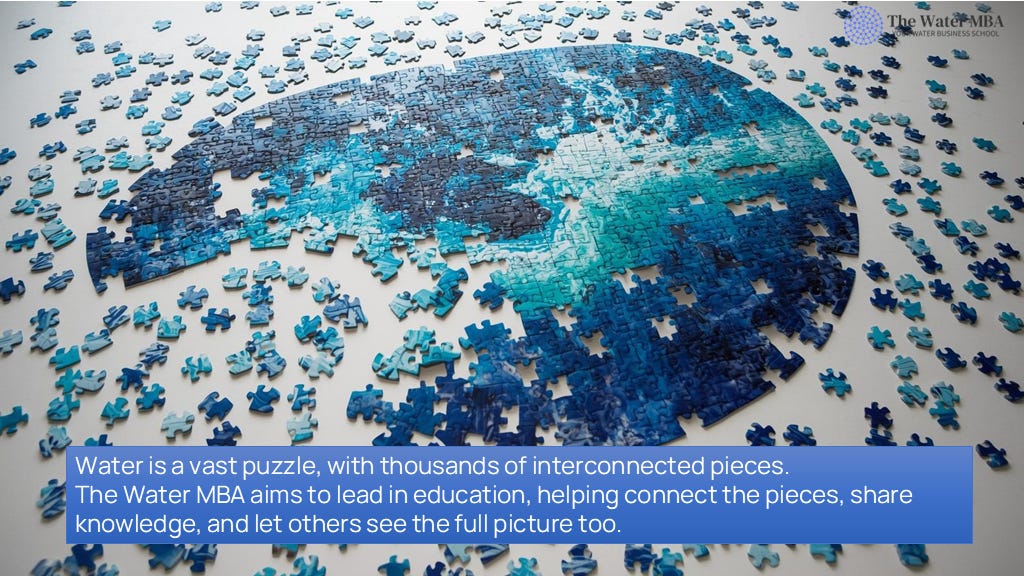
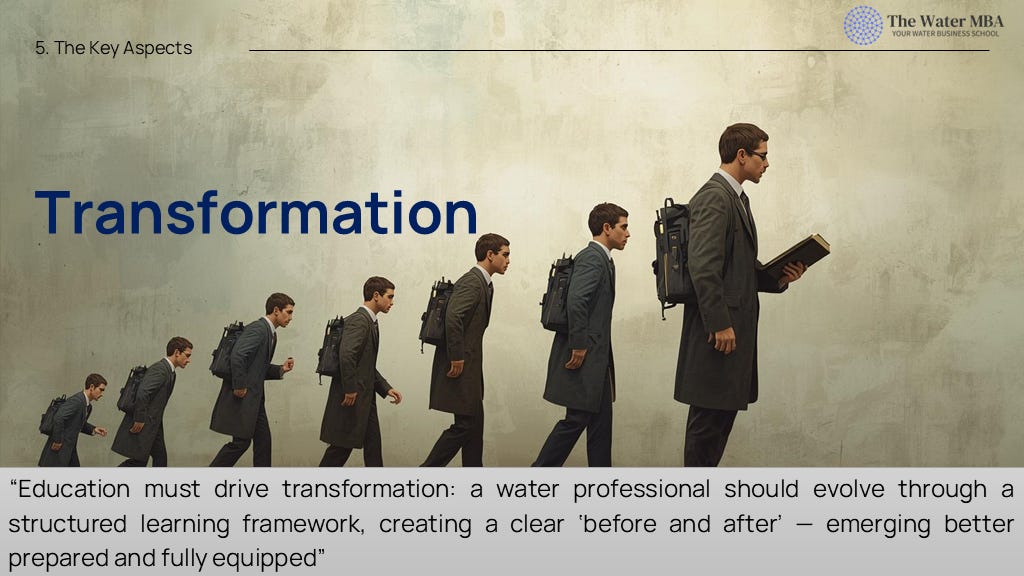
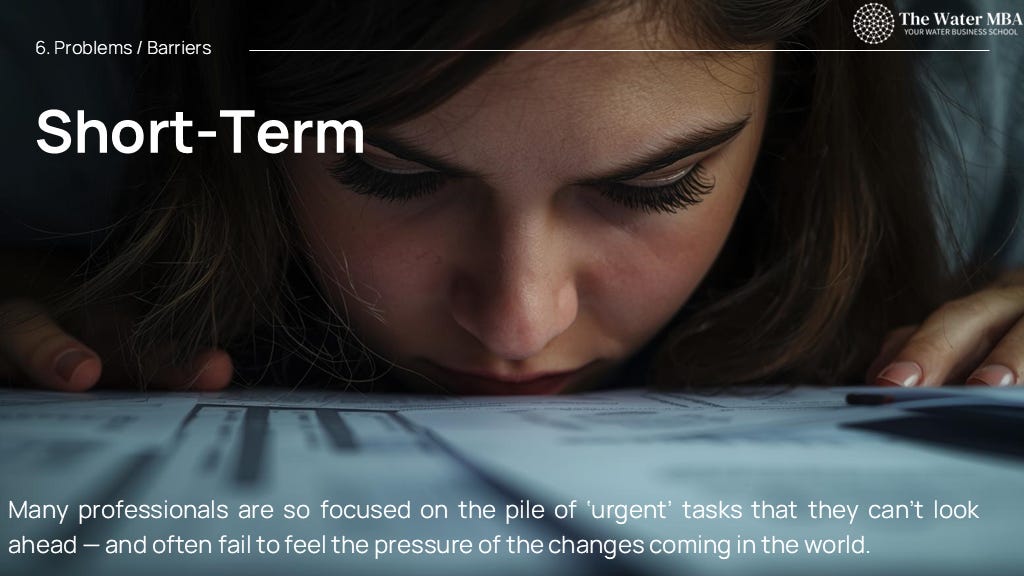
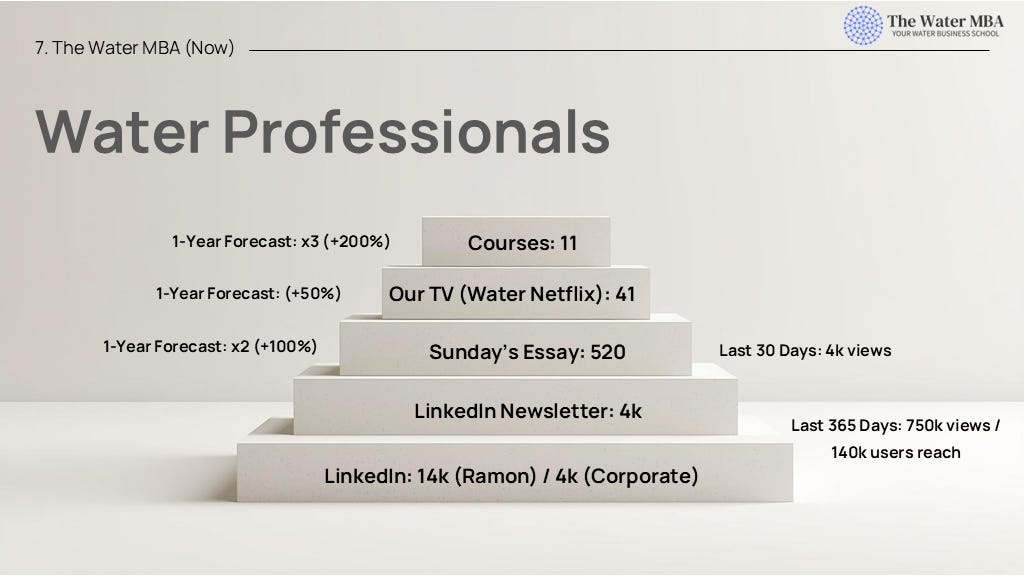
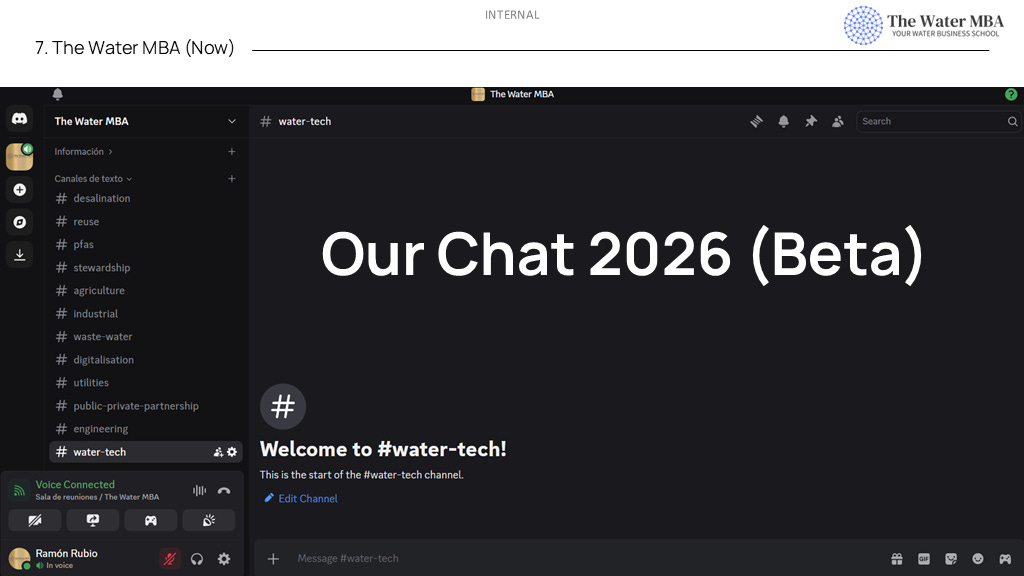

Love this!